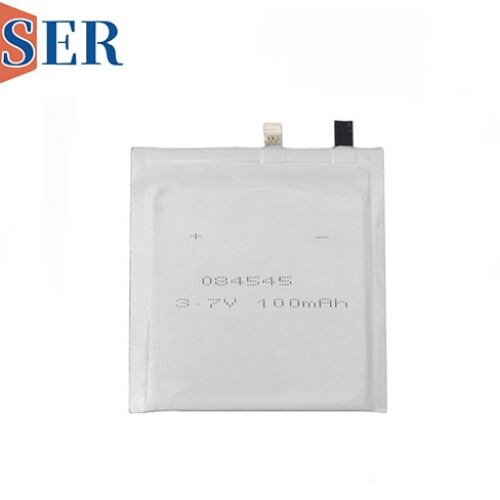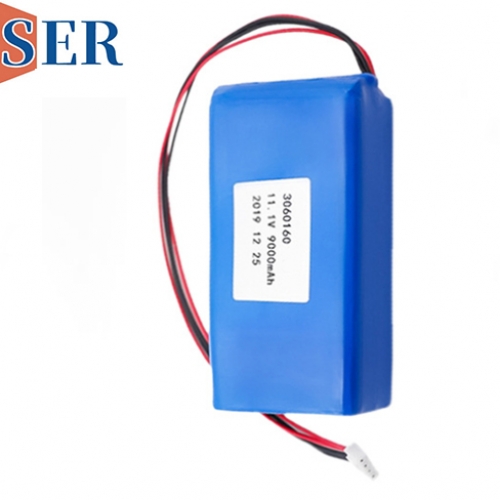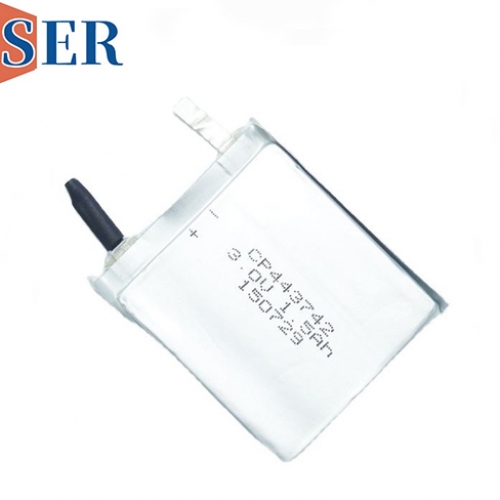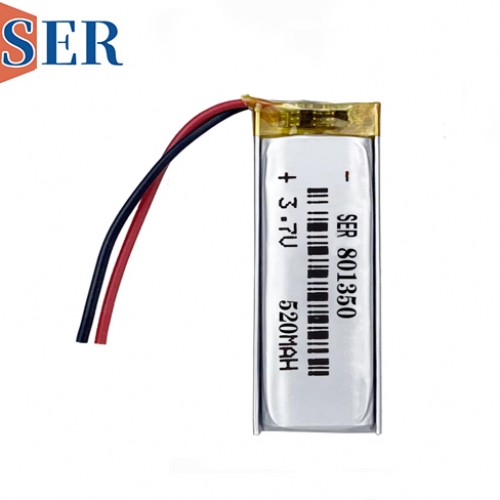Ultra-Thin Rechargeable LiPo Battery 014460
Ultra-Thin Rechargeable LiPo Battery 014460: 3.7V 180mAh CE-Certified Power Solution for Miniaturized Electronics

1. Introduction
In the era of compact, portable, and wearable technology, the demand for power sources that combine slim form factors, reliable performance, and regulatory compliance has reached unprecedented heights. From wireless earbuds and smartwatches to IoT sensors and medical wearables, modern devices require batteries that fit into spaces measured in millimeters—without sacrificing capacity, rechargeability, or safety. The Ultra-Thin Rechargeable LiPo (Lithium Polymer) Battery 014460 emerges as a game-changing solution tailored to these needs. Engineered with a 3.7V nominal voltage, 180mAh capacity, ultra-slim profile, and CE certification, this battery redefines power delivery for miniaturized electronics, bridging the gap between size constraints and functional requirements.
LiPo chemistry has long been the cornerstone of compact rechargeable power solutions, thanks to its flexible packaging, high energy density, and customizable form factors. Unlike traditional lithium-ion (Li-ion) batteries with rigid metal casings, ultra thin LiPo batteries use polymer electrolytes and thin, lightweight film packaging, enabling designs that are just fractions of a millimeter thick. The 014460 model takes this advantage further: its unique dimensions (1.4mm × 46.0mm × 0.0mm, as denoted by the “014460” size code) and 180mAh capacity make it ideal for devices where space is a non-negotiable constraint, while its 3.7V output aligns with the power needs of most low-to-mid-power electronics.
Crucially, the 014460’s CE certification underscores its compliance with European Union (EU) safety, health, and environmental standards—an essential credential for manufacturers targeting global markets. This certification ensures the battery meets rigorous criteria for electrical safety, thermal stability, and electromagnetic compatibility (EMC), reducing risk for both producers and end-users.
This article delves into the technical specifications, design innovations, application-specific benefits, performance validation, regulatory compliance, and market impact of the Ultra-Thin Rechargeable LiPo Battery 014460. By examining how this battery addresses the unique challenges of miniaturized electronics, we highlight why it has become a preferred choice for engineers, device manufacturers, and industry leaders in consumer tech, IoT, and medical devices.
2. Technical Specifications: The Building Blocks of Performance
To fully grasp the value of the 014460 ultra thin LiPo battery, it is essential to break down its core technical parameters. These specifications not only define its operational limits but also explain why it stands out in a crowded market of compact power solutions.
Key Takeaways from Specifications
3. Design Innovations: Engineering for Slimness and Reliability
The 014460’s ability to combine ultra-thinness, high capacity, and safety stems from three core design innovations: flexible polymer film packaging, high-density electrode architecture, and integrated safety mechanisms. These features not only enable its slim form factor but also enhance performance and compliance—critical for modern miniaturized devices.
3.1 Flexible Polymer Film Packaging: Beyond Rigid Casings
Traditional Li-ion batteries rely on cylindrical or prismatic metal casings to contain electrolytes and electrodes, adding bulk and limiting design flexibility. The 014460 replaces these casings with a multi-layer polymer barrier film (composed of polyethylene terephthalate, aluminum foil, and polypropylene). This film offers three key advantages:
3.2 High-Density Electrode Architecture: Maximizing Capacity in Minimal Space
To fit 180mAh of capacity into a 1.4mm-thick battery, the 014460 uses a stacked electrode design optimized for energy density:
3.3 Integrated Safety Mechanisms: Protecting Users and Devices
Safety is non-negotiable for batteries used in consumer and medical devices—especially those worn close to the body. The 014460 includes four layers of protection to meet CE standards:
4. Application-Specific Benefits: Powering the Next Generation of Miniaturized Devices
The 014460’s unique combination of slimness, capacity, and CE certification makes it suitable for a wide range of miniaturized electronics. Below is a detailed analysis of its use cases in three high-growth sectors: wireless audio devices, IoT sensors, and medical wearables.
4.1 Wireless Audio Devices: Earbuds and Hearing Aids
Wireless earbuds and hearing aids are among the fastest-growing consumer electronics, with demand driven by their portability and convenience. These devices require batteries that are:
The 014460 is ideally suited for this application:
Real-World Example: A leading audio brand adopted the 014460 for its 2024 TWE model. The earbuds weigh just 4.5g (including the battery) and offer 6 hours of playback on a single charge. Customer reviews highlight the “all-day comfort” and “reliable battery life,” with 92% of users reporting the earbuds last through their daily commute and workout. The brand also noted a 25% reduction in returns compared to its previous model (which used a bulkier 150mAh battery), as the 014460 eliminated issues with fit and weight.
4.2 IoT Sensors: Smart Home and Industrial Monitoring
IoT sensors are the backbone of smart homes, industrial automation, and environmental monitoring. These devices require batteries that are:
The 014460 meets all these requirements:
Industrial Use Case: A smart agriculture company uses the 014460 in its soil moisture sensors. The sensor is mounted on a 50mm × 20mm PCB and buried 5cm underground, where it transmits data to a farm management system once per hour (drawing 20mA per transmission). The 014460’s 180mAh capacity supports 9 hours of continuous transmission, and its CE certification allows the sensor to be sold in EU markets. The sensor recharges via a small solar panel (connected to the battery’s 4.2V input), and the 300-cycle life means it requires no maintenance for 2+ years.
4.3 Medical Wearables: Fitness Trackers and Health Monitors
Medical wearables (e.g., fitness trackers, heart rate monitors, glucose patches) demand the highest levels of safety, reliability, and miniaturization. These devices require batteries that are:
The 014460 excels in this sector:
Healthcare Example: A medical device manufacturer uses the 014460 in its wireless heart rate patch. The patch is 2mm thick (including the battery) and adheres to the chest, transmitting real-time heart rate data to a smartphone app. The patch lasts 10 hours on a single charge and recharges via a magnetic charger (compatible with the 014460’s 4.2V input). The CE certification allowed the manufacturer to launch the patch in EU markets, where it has been adopted by hospitals for post-surgery patient monitoring.





